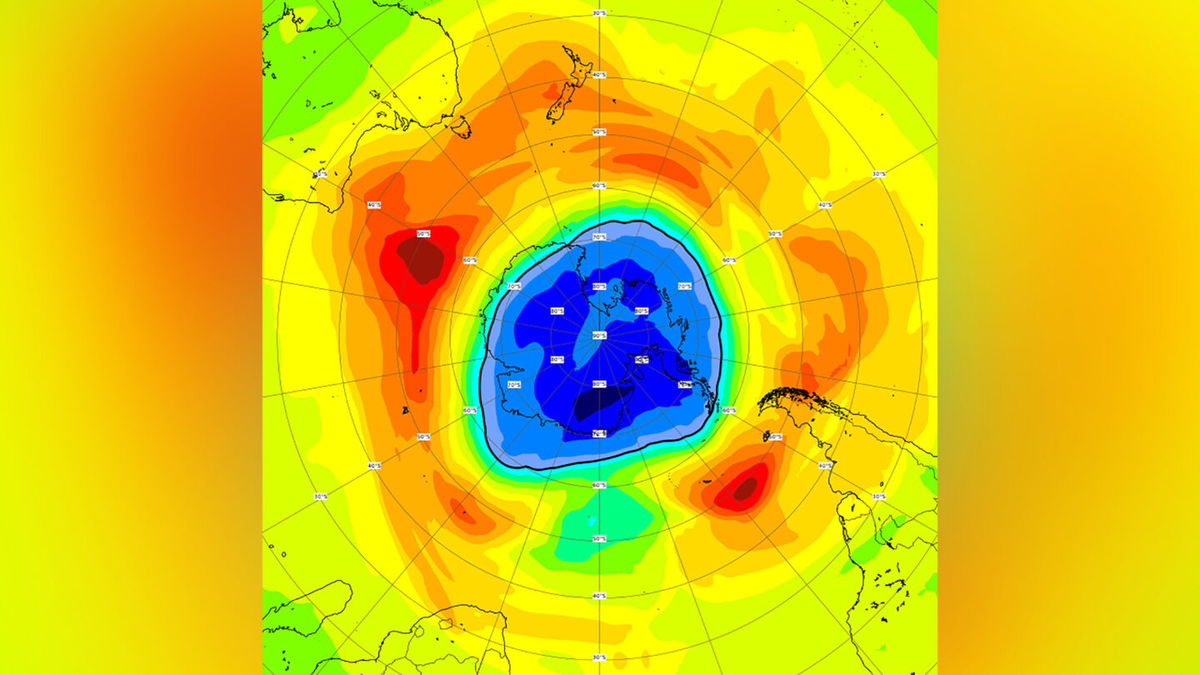The ozone hole over the South Pole is now bigger than Antarctica

By Jeevan Ravindran, CNN
The hole in the ozone that forms every year over the South Pole is now larger than Antarctica, scientists from the European Union’s Copernicus Atmosphere Monitoring Service said Thursday.
The ozone depletes and forms a hole over the Antarctic in the Southern Hemisphere’s spring, which is from August to October. It typically reaches its largest size between mid-September and mid-October, according to Copernicus.
After growing “considerably” in the past week, the hole is now larger than 75% of previous years’ ozone holes at the same stage of the season since 1979 and is now bigger that the continent it looms over.
“This year, the ozone hole developed as expected at the start of the season,” Vincent-Henri Peuch, Copernicus director, said in a statement.
“Now our forecasts show that this year´s hole has evolved into a rather larger than usual one.”
Last year’s hole also began unexceptionally in September, but then turned into “one of the longest-lasting ozone holes in our data record,” according to Copernicus.
The ozone layer, which sits between 9 and 22 miles above the Earth, protects the planet from ultraviolet radiation.
The hole in the Southern Hemisphere is typically caused by chemicals, such as chlorine and bromine migrating into the stratosphere, creating catalytic reactions during Antarctic winter.
The ozone hole is related to the Antarctic polar vortex, a band of swirling cold air that moves around the Earth. When temperatures high up in the stratosphere start to rise in the late spring, ozone depletion slows, the polar vortex weakens and finally breaks down, and by December, ozone levels usually return to normal.
This ends the isolation of air created by the polar vortex that forms during Antarctic winter, enabling chemicals such as chlorine and bromine to deplete the ozone layer, according to Copernicus and NASA. Ozone levels are usually restored to normal levels by December.
Copernicus monitors the ozone layer using computer modeling and satellite observations, and although the ozone layer is showing signs of recovery, Copernicus says it would not completely recover until the 2060s or 2070s.
This is because it will take time to see the effects of the phasing out of chlorofluorocarbons (CFCs), which deplete the ozone layer.
The chemicals were first regulated by the Montreal Protocol — first signed in 1987. They are expected to be phased out by 2030, according to the Environmental Protection Agency.
A study published in the Nature journal last month said the world would be on course for an additional 2.5 degree Celsius rise in global temperatures and a collapse of the ozone layer if CFCs had not been banned by the protocol.
The-CNN-Wire
™ & © 2021 Cable News Network, Inc., a WarnerMedia Company. All rights reserved.
CNN’s Allen Kim and Ashley Strickland contributed to this report.